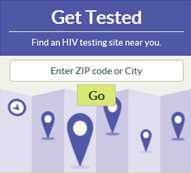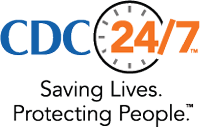Hispanics/Latinos
Health disparities are differences in the incidence, prevalence, and mortality of a disease and the related adverse health conditions that exist among specific population groups. These groups may be characterized by gender, age, race or ethnicity, education, income, social class, disability, geographic location, or sexual orientation. These health disparities are one reason why HIV/AIDS, viral hepatitis, STDs, and TB take a greater toll in one population group over another. Find information about how these diseases affect Hispanic/Latino populations.
HIV/AIDS
In 2014, Hispanics/Latinos made up 17% of the population of the United States but accounted for 23% of estimated diagnoses of HIV infection.
Among Hispanic/Latino males in the United States and six dependent areas in 2014, an estimated 84% of diagnosed HIV infections were attributed to male-to-male sexual contact, 8% were attributed to heterosexual contact, and 5% were attributed to injection drug use. Approximately 3% of diagnosed HIV infections among Hispanic/Latino males were attributed to male-to-male sexual contact and injection drug use, and less than 1% were attributed to other transmission categories.
Among Hispanic/Latino females in the United States and six dependent areas in 2014, 86% of diagnosed HIV infections were attributed to heterosexual contact, 13% were attributed to injection drug use, and 1% were attributed to other transmission categories.
A recent HIV care and treatment study published in JAMA Internal Medicine showed that Hispanic/Latinos diagnosed with HIV are less likely than whites to be linked to care, retained in care, receive antiretroviral treatment and achieve adequate viral suppression.
Hispanic/Latino Males

Among Hispanic/Latino males in the United States and six dependent areas in 2014, an estimated 84% of diagnosed HIV infections were attributed to male-to-male sexual contact, 8% were attributed to heterosexual contact, and 5% were attributed to injection drug use . Approximately 3% of diagnosed HIV infections among Hispanic/Latino males were attributed to male-to-male sexual contact and injection drug use, and less than 1% were attributed to other transmission categories.
Hispanic/Latino Females
Among Hispanic/Latino females in the United States and six dependent areas in 2014, 86% of diagnosed HIV infections were attributed to heterosexual contact, 13% were attributed to injection drug use, and 1% were attributed to other transmission categories.
More Information:
Sexually Transmitted Diseases (STD)
Gonorrhea
In 2014, the gonorrhea rate among Hispanics was 73.3 cases per 100,000 population, which was 1.9 times the rate among whites. This disparity was similar for Hispanic women (1.8 times the rate among white women) and Hispanic men (2.0 times the rate among white men). The disparity in gonorrhea rates for Hispanics was highest in the Northeast and lowest in the West and Midwest.
Chlamydia
In 2014, the chlamydia rate among Hispanics was 380.6 cases per 100,000 population, which is an increase from the 2013 rate of 377.0 cases per 100,000 and 2.1 times the rate among whites.
Syphilis
In 2014, the rate of primary and secondary (P&S) syphilis among Hispanics was 7.6 cases per 100,000 population. The 2014 rate of P&S syphilis for Hispanics was 2.2 times the rate for whites. This disparity was similar for Hispanic women (2.2 times the rate among white women) and Hispanic men (2.1 times the rate among white men).
In 2014, the rate of congenital syphilis was 12.1 cases per 100,000 live births among Hispanics. Race/ethnicity for cases of congenital syphilis is based on the mother’s race/ethnicity. This rate was 3.3 times the rate among whites (3.7 cases per 100,000 live births).
More Information:
- STD Topic Site
- STDs and Health Disparities
- STD Surveillance Report
- STDs in Racial and Ethnic Minorities
Viral Hepatitis

Acute Hepatitis A
In 2014, the rate of hepatitis A among Hispanics was 0.38 cases per 100,000 population, the lowest rate recorded for this group.
Acute Hepatitis B
In 2014, the rate of acute hepatitis B was lowest for Hispanics and Asian/Pacific Islanders (0.29 cases per 100,000 population for each group).
Acute Hepatitis C
During 2002–2011, the incidence rate of acute hepatitis C remained below 0.5 cases per 100,000. The rate increased to 0.6 cases per 100,000 population in 2012 and to 0.7 cases per 100,000 population in 2013 and 2014. The rate of hepatitis C among Hispanics increased 13.6% (from 0.22 cases per 100,000 population in 2013 to 0.25 case per 100,000 population in 2014).
More Information:
Tuberculosis (TB)
In 2014, 9,421 TB cases were reported to CDC from the 50 states and the District of Columbia. That same year, as in previous years, Hispanics or Latinos exceeded all other racial or ethnic groups with the largest percentage (29%) of total number of reported TB cases in the United States. Overall, 87% of all reported TB cases occurred in racial and ethnic minorities in 2014.
More Information:
- Page last reviewed: March 14, 2014
- Page last updated: February 1, 2017
- Content source:


 ShareCompartir
ShareCompartir


